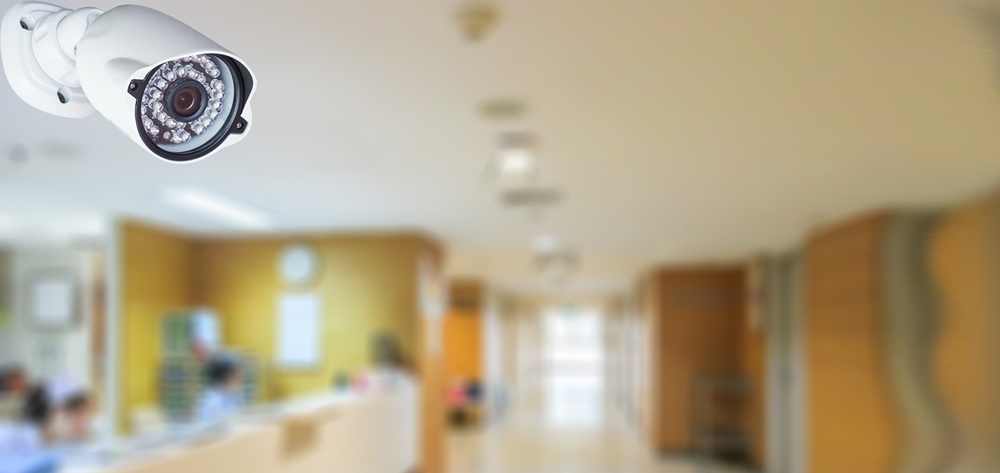Nurses who work in hospitals are challenged to identify patients at risk for falling and implement initiatives to keep them safe. Activities such as performing a fall risk assessment, lowering the bed, conducting a medication review, using bed and chair alarms, and providing visual identifiers have been only partially successful in reducing falls. To achieve better results, Greenwich Hospital implemented a Targeted Video Surveillance Program, which has not only increased the safety of our patients, but has decreased our use of patient attendants, leading to a positive impact on our bottom-line.
Disturbing numbers
About one million patients fall in U.S. hospitals each year, a staggering statistic. Most of these falls are related to toileting (45%) and impulsivity (31%), and an alarming 80% to 90% of patient falls are not witnessed.
The outcomes for patients who fall are disquieting. About 30% of patient falls result in an injury, and of those, 4% to 6% result in serious injury. Moreover, falls often cause significant patient and family distress resulting in a delay in rehabilitation.
Designing the program
Our Targeted Video Surveillance Program consists of a template for identifying patients at high risk for fall and a supplemental care model that includes monitored surveillance.
To start the program, rooms were equipped with cameras and audio capability to ensure communication between the patient and the monitor technician in addition to visualization. Cameras were placed in a manner to respect patient privacy when needed. Additional essential elements of the care model included frequent rounding, which focused on toileting needs, and a plan for family notification of patient participation in the program. Signage in the patient’s room alerted family, visitors, staff, and physicians entering the room that the area was under surveillance.
Both patients and their families received verbal education and written information about the video surveillance program. In addition, the roles and responsibilities of various staff were defined, including the video monitor technician, the “rounder,” and the staff providing direct patient care. Staff received education specific to their role.
Training of certified nursing assistants for the technician role included education in the use of the video monitoring equipment, as well as the responsibilities associated with rounding on patients. The rounder is specific to this program, and they have no additional responsibilities other than to toilet the patients, move items closer to them, and maintain a safe environment around them. The aides and nurses from the floor do not perform this function. The rounders are in the room approximately every 20 minutes.
The rounder and the monitor technician are both CNAs and switch roles every two hours to prevent monitor/alarm fatigue.
The nursing assistants in this program were also trained to identify potential fall behaviors. Education on initiating verbal cues via the audio component of the video monitor system, or alternatively, contacting the rounder to respond for immediate intervention, was also integrated into the education. The role of the rounder was developed to ensure frequent assessments were completed on our monitored patients, and to assess the patient’s need for toileting, positioning, personal needs, and comfort.
The pilot, launched June 2012, was conducted on a medicine unit, which has a high percentage of geriatric patients.
Data collection and analysis
To track our program’s progress, we developed a daily log to help collect data on the number of beds occupied, the number of verbal and staff interventions, and the number of fall alerts activated. Fall prevention policies were created to outline guidelines for patient inclusion, exclusion, and discontinuation in the program.
The log data helped evaluate the success of the program. We also looked at the number of interventions and patient attendants used during each payroll period. Daily huddles, which consist of staff, nurse managers, and supervisors, collected data and policies are reviewed to determine the appropriateness of patient selection for continued inclusion in the program. Budgeted staff was identified for the program as well as a budget variance report that monitors and reviews the utilization of video monitor staff and patient needs.
Results
The project, which began in June 2012 with four beds and expanded to 14 beds within 6 months, was found to be effective in significantly decreasing the number of falls. Over a 2-year period, our monitored rooms housed about 2,500 patients. Only two falls have occurred, neither of which resulted in injury. Our data also showcases that many potential falls were avoided by using the system. The program has continued to expand and in 2015 we now have 24 beds being monitored with our success rates continuing at the same rate.
Installation expense for the program consisted of an investment of $52,000 for video equipment and a build-out of a central monitoring area, which resulted in an additional $30,000. However, because patient attendant use decreased, we netted out an annual targeted savings of $250,000. We are currently adding more monitored beds that will be dispersed throughout our medicine, surgery, and oncology units.
Keeping patients safe
The video monitoring program has provided a safer environment for our patients and a cost/value benefit for our hospital. An added benefit has been the development of our team and the observation of pride from our nursing assistants as they recognized the importance of their role in patient safety.
We have hosted staff from other hospitals who were interested in the program, and a Targeted Surveillance Program has now been implemented in other institutions with positive results.
Selected references
Lake ET, Shang J, Klaus S, et al. Patient falls: Association with hospital Magnet status and nursing unit staff. Res Nurs Health. 2010;33(5):413-25.
Oliver D, Healey F, Haines TP. Preventing falls and fall-related injuries in hospitals. Clin Geriatr Med. 2010;26(4):645-92.
Susan Brown is senior vice president for patient care services and chief nurse executive, and Priscilla Sterne is director of nursing programs at Greenwich Hospital in Greenwich, Connecticut.


















